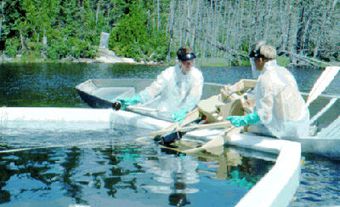University College
A public post-secondary educational institution, the university college was a hybrid institution in Canada. As its name implies, the university college incorporated many of the traditional values and culture of both the university and the community college. In doing so it faced the challenge of establishing an identity which distinguished itself from either.
History
The first university college was established on Cape Breton Island in Nova Scotia in 1974. It was formed through an amalgamation of the Nova Scotia Eastern Institute of Technology and Xavier Junior College. The latter was affiliated previously with St Francis Xavier University. The new institution, named University College of Cape Breton, became a public degree-granting institution, while retaining many of the technical and vocational programs from the former institute of technology.
Following a 1988 government initiative designed to increase access to degree programs in British Columbia, 5 community colleges were granted authority to offer bachelor's degrees. These 5 institutions--Fraser Valley, Okanagan, Cariboo, Malaspina and Kwantlen--were renamed university colleges. They offered their degrees initially under the authority of one or more of the 3 provincial universities, but in 1995 were awarded that authority in their own right.
A similar situation occurred in Alberta in 1995 when the government announced that a small number of applied degrees would be offered in selected community colleges and technical institutes. Although these institutions adopted the university college concept, that title was not used formally in Alberta.
In recent years, the university college name has disappeared in British Columbia. All the former university colleges have become universities through re-designation or merger with existing institutions. In 2004 - 05 Okanagan University College split into Okanagan College and UBC Okanagan, a campus of the well-established University of British Columbia. By 2008, all of the other university colleges, along with one additional community college and provincial institute, had become universities, primarily but not exclusively focused on undergraduate education. While the split of Okanagan University College produced two institutions with programming divided along fairly traditional lines, the re-designation of the others has not produced a change in their dual-sector program (career/vocational and academic educational) offerings to date.
In Alberta two of the applied degree granting colleges--Grant MacEwan and Mount Royal --were also recently re-designated as undergraduate universities. As well, in Cape Breton the college label has been dropped from Cape Breton University, established under the authority of the Cape Breton University Act.
Curriculum
The former university colleges in British Columbia have provided a wide variety of courses and programs ranging from adult basic education and upgrading to apprenticeship, technical vocational programs and academic studies, including undergraduate degrees in both conventional and applied fields.
Cape Breton University offers a more limited curriculum, but remains focused on applied learning including trades and technology training and academic degrees.
Funding
As public post-secondary institutions, the former university colleges in British Columbia have been financed primarily through provincial grants, student tuition fees and contracted services in keeping with their mandates. Cape Breton University is funded in a manner similar to the universities in that province.
Conclusion
In attempting to establish an identity which distinguished them from either community colleges or universities, university colleges faced challenges such as defining an appropriate role for faculty in teaching and research, interpreting the character of applied degrees, establishing full and wide recognition of the credentials which they awarded and maintaining the comprehensive structure of their curricula. They were innovative educational institutions designed to provide new kinds of applied programs to a changing student clientele in an evolving economic environment. For the majority of the former university colleges, many of the same challenges and opportunities remain at the forefront as they consider their present and future as new universities.

 Share on Facebook
Share on Facebook Share on X
Share on X Share by Email
Share by Email Share on Google Classroom
Share on Google Classroom

